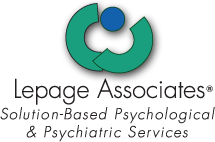Wonderful. I refer many of my clients to their office and have had nothing but praise for their services.
J.B.
Dr. Lepage and her team are trusted, experienced and dedicated professionals at the top of their field. As a family law attorney, I refer clients to Lepage with the confidence…
J.M.
As a mother of two children and a divorce attorney, I can give both my personal and professional opinion that Lepage Associates provides excellent services to families throughout the Triangle.…
D.T.
Very professional and experienced psychologists. Through my law practice, I’ve spoken with several individuals who have used the services of Lepage Associates for divorce therapy, family therapy, child therapy and…
R.D.
Clients I have sent to Lepage have provided consistently positive feedback about the service provided. Lepage Psychological and Psychiatric Services is very strong in assisting divorcing families set up parenting…
K.D.
I am a family law attorney. In child custody litigation the most important considerations are the child’s needs and the ability of a parent to meet those needs. Dr. Lepage…
W.H.
As a family law attorney, I interact with Lepage and Associates in multiple capacities, such as providing therapy to clients, the other party, and their kids, helping reunify fractured families,…
C.P.
The clinicians at Lepage are so tuned in to the needs of both adults and children experiencing divorce. They are sensitive, up-to-date on the most recent research about what these…
M.P.
Dr. Lepage and staff are very thorough. They truly dig into family issues during the most unfortunate times like divorce to make every effort to ease pains to everyone. Unfortunately,…
D.N.
Dr. Lepage worked with my family for several months. She provides care with professionalism and sensitivity. I highly recommend her!
L.W.
My family benefited a number of times from Dr. Lepage’s expert guidance. I found her to be professional, thoughtful, and balanced. I knew her to be highly regarded in the…
Anonymous:
I highly recommend the services of Lepage and Associates. All staff members my family worked with were helpful, informative and easily accessible. I would not hesitate to use their services…
M.S.
I can reliably count on Lepage Psychological Services to delivery top notch care. They are consistently professional, caring, and effective in their treatment. I would highly recommend them to anyone…
J.M.
Professional. Caring. Competent.
T.B.
Lepage and Associates are a caring, skilled, and gifted group of clinicians who have helped so many people in the community. They are led by Dr. Tina Lepage who is…
M.S.
Professional and exceptional mental health care.
T.E.
Their professionalism is top notch and they take sincere interest in the best care of their clients. I highly recommend Lepage Associates.
S.N.
My husband and I had a great experience with Rae Ann who addressed all of our issues with a kind, empathetic and inquisitive nature. We were able to resolve communication…
A.R.
I worked with Cheryl Cohen of Lepage on a family matter. Cheryl was very caring for all involved and was great to work with. I valued her input and highly…
D.B.
Fantastic clinical services with expert team of clinicians!
C.B.
One of the finest practices I’ve encountered. Excellent work!
F.G.
Highly recommended, very diverse staff that can understand and relate to all walks of life. Professional environment and excellent location. Five Stars!
S.S.
I’m always surprised how supporting and caring they are. I’ve had multiple really positive experiences. Thank you for your help when I really needed it.
J.S.
The front desk staff are friendly and helpful, and the therapist I see is caring and devoted to her practice.
Anonymous:
Lepage Associates is an outstanding practice. The quality of their services is top-notch and their integrity is second to none. I highly recommend them!
D.V.
Dr. Lepage has a remarkable staff working alongside her. They all have different specialties and different therapeutic techniques, but they all work together to serve their clients. They offer so…
B.L.
